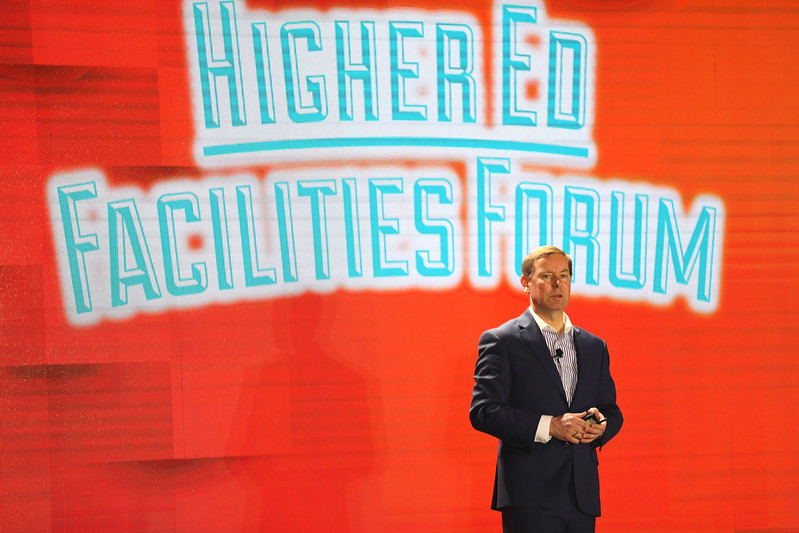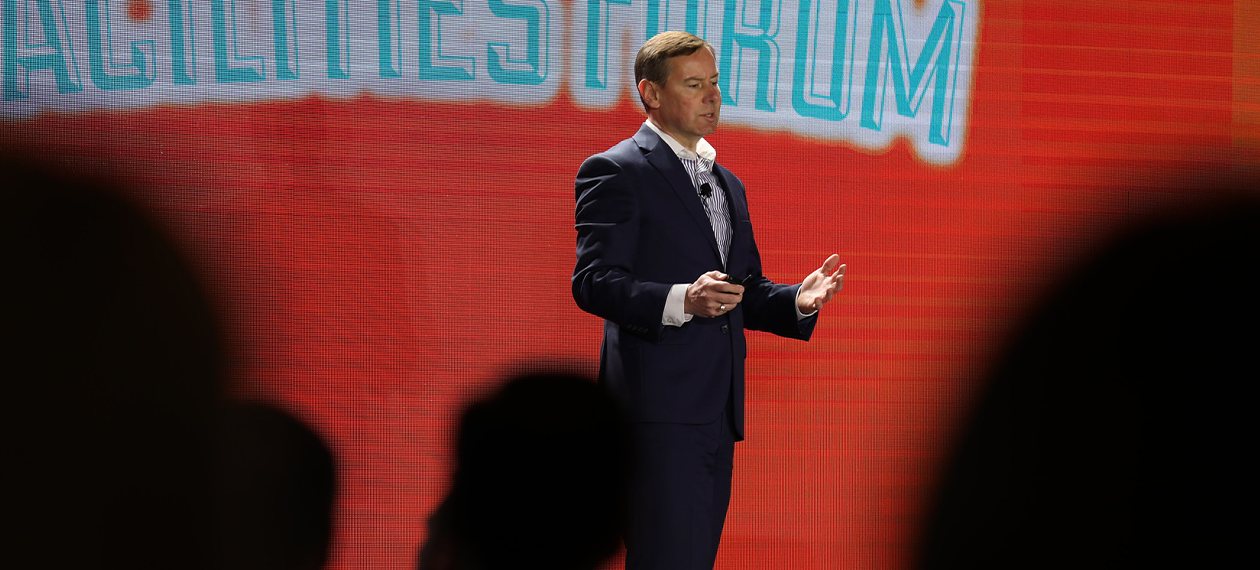When it comes to transitioning capital projects from design and construction to facilities operations, a number of challenges can contribute to a shaky handoff.
The key to a smooth transition? According to Patrick Burke, AVP of Capital Project Management at the Columbia University Medical Center, it’s essential to integrate the various teams involved and thoroughly prepare the project transition from day one. At the Higher Ed Facilities Forum, Burke shared valuable insights into his team's strategies for success…
Mechanisms For Enhancing Collaboration
While different project teams have different goals, Burke believes it’s helpful to remember that everyone is ultimately working toward the same objective.
“In any business, we’re only as good as our weakest link,” Burke said. “At Columbia, we spend a lot of time working to bring together all of the project teams to strengthen the lines of communication.”
The bottom line is that the transition phase for capital projects needs to be discussed from the get-go. To do so, Burke’s team embraces a few strategies:
Technical Review Meetings
At Columbia, TRM’s are highly-structured, formatted meetings that occur at multiple phases of capital projects from beginning to end, in order to ensure that all teams are on the same page. These catch-ups bring together architects, engineers, facilities, and project management teams to discuss the various design opportunities and limitations within a given building.
Engineering Operations Team Assumes Commissioning Responsibilities
Right at the onset of a project, the engineering operations team is charged with putting out RFP’s for commissioning. By giving these team members “a seat at the life of the design and construction process,” a full understanding of the end result is created, eliminating the likelihood of unwelcome (and costly) surprises.
The “Super Team”
The “super team” is comprised of superintendents, various project teams, and facilities teams. In addition to TRM’s, Columbia holds weekly one-hour meetings to discuss the projects underway and create a strengthened level of coordination among the different teams working on a given building.
Tech Transfer
In any capital project, there’s an enormous amount of technology that must be transitioned to the facilities team. At Columbia, this is talked through at the earliest stages to ensure a seamless hand-off. The architecture, engineering, and BIM modeling teams all collaborate to prepare documents and show an ideal model of the facility.

Common Challenges
Despite embracing these proactive strategies, Burke acknowledges that the handoff is bound to be riddled with some level of misunderstanding between the design/construction teams and facilities/operations. He calls the most common challenges the 3 T’s: timelines, teams, and technology.
Moving forward, Burke assures these challenges can be mitigated through:
- Empathy
- Training
- Communications/Engagement
- Metrics
If you’re raising your eyebrows at the ‘empathy’ component, Burke says that’s it’s really as simple as understanding what other individuals and teams within the organization are going through.
“Everyone has their own small fires to put out each day, so it’s important not to jump to assumptions when a particular person isn’t there to help you or your team right away,” Burke said. “It’s incumbent to have leaders who focus on building empathy and understanding between various teams.”
At Columbia, part of that deeper understanding comes from enhanced training with the facilities and operations team at the onset of every capital project, as well as quarterly refreshers.
“It’s incumbent to have leaders who focus on building empathy and understanding between various teams.”
It also stems from a dedication to communication and engagement. Since facilities leaders speak to many different audiences, Burke emphasizes the importance of knowing your audience before crafting communication materials. The facilities leadership team at Columbia developed a communications group consisting of three full-time employees to help with signage, emails, and web communications.
“There’s a much higher level of professionalism, which translates to credibility on the behalf of the organization, which is something we want to continue,” Burke said.
Finally, Burke concurred that metrics are another area of renewed interest among the facilities leadership group.
“As a facilities organization, what we’re working through is developing a yardstick for each department, so we can do a better job at measuring our levels of success across the delivery and implementation for each and all of capital projects.”
At the end of the day, a successful project-to-operations handoff is about proactive preparation and a well-defined transition plan, not perfection.

Posted by
Join us at HEFF!
An interactive retreat for facilities leaders at the nation's top colleges and universities.
Nov 8-10, 2026 | San Antonio, TX
Learn More









Comments